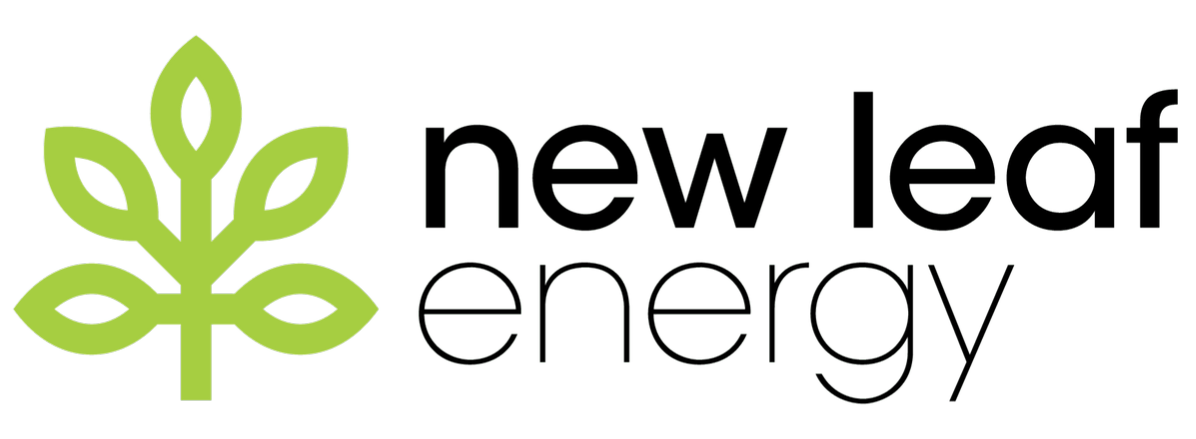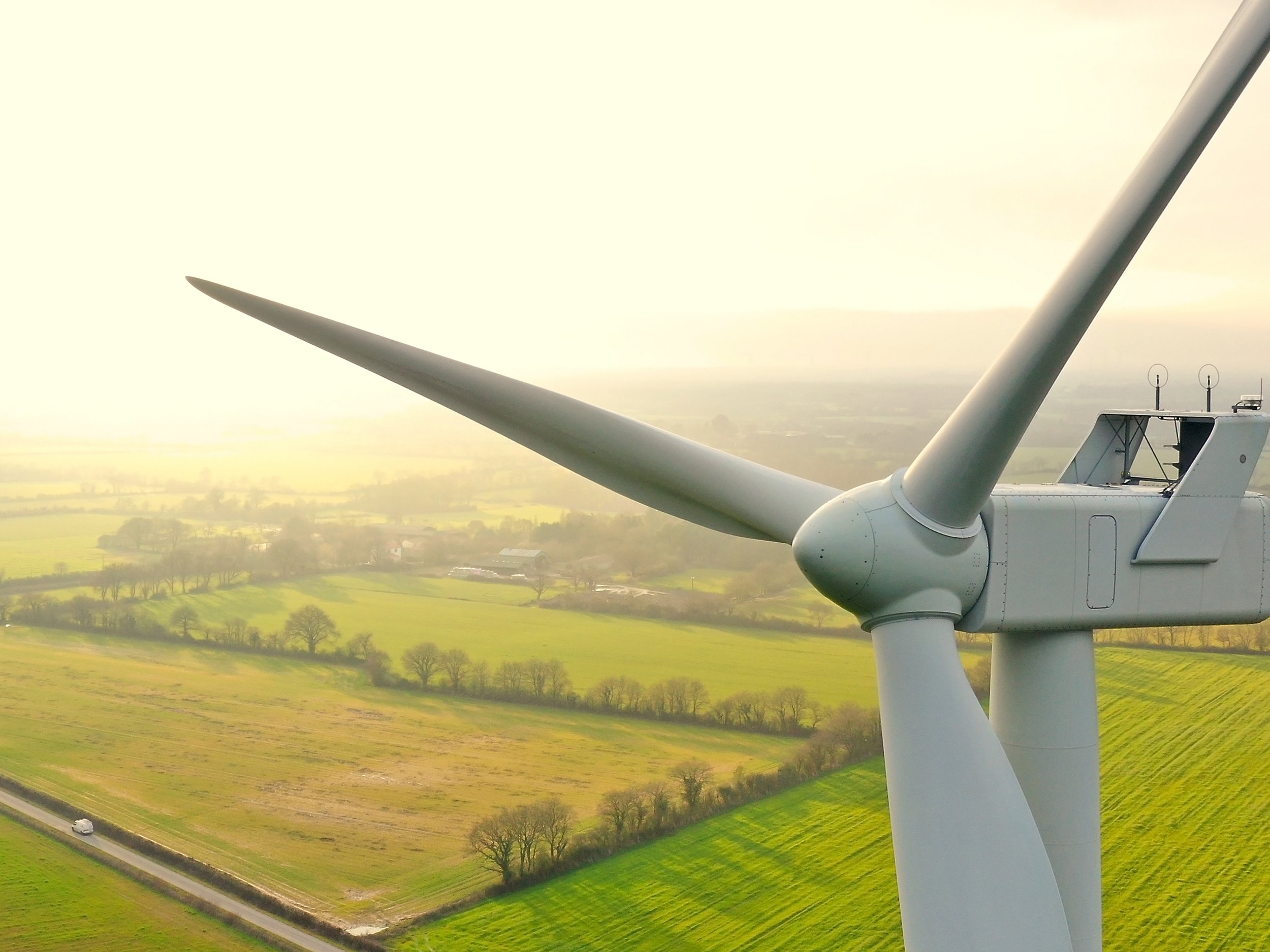Small-scale community wind is blowing into Alexander, NY.
With only 1 turbine on less than an acre, this small-scale wind project can generate enough locally grown clean energy to power up to 1,300 homes. The electricity will stay within the community for local subscribers, giving Alexander residents & businesses more access to affordable clean energy—and more freedom to choose.
About the proposed project
This small-scale community wind project consists of a single wind turbine which will be thoughtfully sited on approximately 5 acres of unused land in Alexander, NY. The landowners are happily leasing this small portion of their property in exchange for a stable 25+ year income with little impact on their current land use.
LOCATION: 4005 Dry Bridge Rd., Alexander NY
ESTIMATED TIMELINE: (subject to change pending approvals)
Summer 2022: Begin permitting
Spring 2023: Submit building plans
Fall 2023: Construction begins
Benefits to the Alexander Community
Local tax revenue: Municipal services including the town, county, and school districts all benefit from the increased tax revenue from the project, all of which is negotiated as part of the permitting process.
Continued agricultural land use: Using small acreage, community wind projects typically allow farming operations and other agricultural land use to continue side-by-side the wind project.
More jobs: Small community wind projects like this one can create ~30 jobs over the life of the project, including short-term construction jobs and some long-term jobs for operations and maintenance.
Local materials: Steel, concrete, gravel, and electrical materials are typically sourced locally.
Locally-sourced clean energy: Provides locally-generated energy that powers local homes, restaurants, and businesses. This source of clean energy also supports the state’s goals to reach 70% renewable energy generation by 2030 and zero-emissions electricity by 2040.
Local energy users will be able to enroll in community wind program: Once the system is operational, community residents and businesses will be able to enroll and get clean energy at a discount, even lower than the rates for non-renewable providers.
How We Research Each Potential Wind Site
Wind measurements: During the initial stages, we typically install a meteorological measurement tower (also known as a “met tower”) to collect data on local wind speeds and other conditions to make sure the site is acceptable for wind energy. Met towers are typically removed before construction begins on the project.
Environmental studies: As part of our comprehensive due diligence, our engineers will conduct a very thorough process of evaluation and permitting to assess and mitigate risk to the communities where we work. This includes studies to rule out any impact on historical/cultural resources, wetlands, or endangered or threatened species. We will continue to update this page when each of these studies are complete.
Impact on birds and bats: For each of our wind projects, we also consult with the Department of Environmental Conservation and avian specialists to conduct habitat assessments to ensure there’s no adverse effects on bird and bat populations.
Your Questions, Answered
Will wind impact my property value?
The short answer is no. There’s no long-term evidence that wind power impacts property values, based on years of major comprehensive and peer-reviewed studies in the US.
Even as recently as February 2022, the leading energy researcher for the Department of Energy was quoted in an NPR interview reiterating his findings that there’s no impact to residential property values after studying it over multiple periods of time.
The most comprehensive study to date was published in 2015, and it found no statistical evidence that home values near turbines were affected in either the post-construction or post-announcement/pre-construction periods.
We understand you have genuine concerns about your most important asset — your home. And as one of the oldest and most reliable clean energy developers in the U.S., we know the importance of making careful choices for your land. But as scary as the sensational headlines and anecdotes might seem, they just aren’t true.
What is Community Wind?
Most importantly: it’s NOT a utility-scale wind farm.
Small project on minimal acreage: Unlike large-scale wind farms that generate energy for utilities, smaller community wind projects like this one use minimal acreage with only 1-2 wind turbines.
Freedom to choose: Once the project is complete, community members can choose to buy their electricity directly from Community Wind — keeping the clean energy in their community.
Affordable electricity from a renewable source: Once the turbines are operational, local participants in the community wind project receive clean energy at a discounted rate, taking advantage of the most affordable way to generate electricity today.
Fun fact: As little as 5 acres of available land can produce enough wind energy to power 2,500 local homes, making community wind a desirable option for rural areas looking to gain energy independence while also generating municipal tax revenue.
How do we handle waste disposal at the end of a wind turbine’s life?
Even though renewable energy waste contains much less toxic substances than fossil fuel emissions, the industry has developed solutions for safely recycling renewable energy systems to further sustainability efforts. At New Leaf Energy, we partner with manufacturers who recycle system materials to use in other wind projects or other materials. In addition, at the end of the system life, it is removed and the land is restored, placing topsoil and seed to the landowners specification.
Recycling: For wind systems, typically manufacturers first separate blades, nacelle covers, and hub covers from the turbine. Then, metals are removed from the fiberglass components. Fiberglass pieces and metals are routed to pre-vetted, trusted recycling partners. Fiberglass recycling methods are selected to match the needs of the project. These recycled materials can be repurposed its various ways, including cement coprocessing, gasification, new composite materials, or the reclamation of fiberglass/carbon fiber into raw materials.
Restoration: Then, the manufacturer completes the lifecycle of a wind project by sustainably restoring the site back to its natural state following removal. Wind turbines can also be refurbished and fed into the production of new wind turbines. Recycled materials can be returned into concrete for local roads or composite materials for decking and roof shingles, for example.
More FAQs about Wind Energy
We know you may have questions about wind power, whether they’re concerns about sound, property values, and impacts on birds. Here’s one of the best sources of fact-checked information about wind, with links to the original sources: The Truth About Wind Power.
-
Wind energy is a quiet neighbor when operating. These turbines typically produce no more than 50 decibels of sound that will blend into the background noise. (That’s louder than a refrigerator but quieter than a single average window air conditioner.)
-
Wind power is far less harmful to wildlife than traditional energy energy sources. And according to the Audubon society, the greatest causes of bird deaths are cats, tall buildings, power lines and cell towers, and automobiles.
-
The design of the access roads and wind turbine foundations includes a stormwater pollution prevention plan which incorporates stormwater management. The project does not create any excess flood waters. Any rain or stormwater is filtered through the ground using stormwater management best practices. The large portion of the concrete slab that supports the wind turbine is buried underground, so the landowner can continue to farm right up to the base of the tower. The area will be seeded with the seed mix specified by the landowner, maintaining consistency with the surrounding areas.
-
Shadow flicker can occur when rotating turbine blades come between the viewer and the sun, causing a moving shadow. Shadow flicker usually occurs close to sunrise and sunset. Factors that determine how often a wind turbine will cast a shadow on a residence or other structure include turbine height and length of blades, site topography, distance between turbine and structure, season and time of day, wind direction and speed, and cloud cover. For instance, there is no shadow flicker on cloudy days or when the wind is not blowing.
When proper planning and standards are implemented during the design process, the occurrence of shadow flicker can be minimized or entirely avoided. The impact of shadow flicker on homes, roads, and populated areas can be mitigated through the use of appropriate setbacks, planting trees for screening, or window treatments to minimize concerns. Shadow flicker can also be limited by pausing the operation of a turbine during periods when unacceptable flicker is expected to occur.
-
Community wind projects do not require transmission lines, rather they produce local electricity for consumption in the surrounding region. Community wind-generated electricity is not exported to other areas, but used locally. Community wind projects connect to electrical ‘distribution lines’ which are the same lines that feed neighborhoods, businesses, schools, and municipal buildings.
An unparalleled track record
About New Leaf Energy
At New Leaf Energy, we partner with landowners, policy makers, and other stakeholders to accelerate renewable energy adoption. One of the most experienced renewable energy developers in the United States, we have an unparalleled track record of converting potential projects to gigawatts in the ground.






